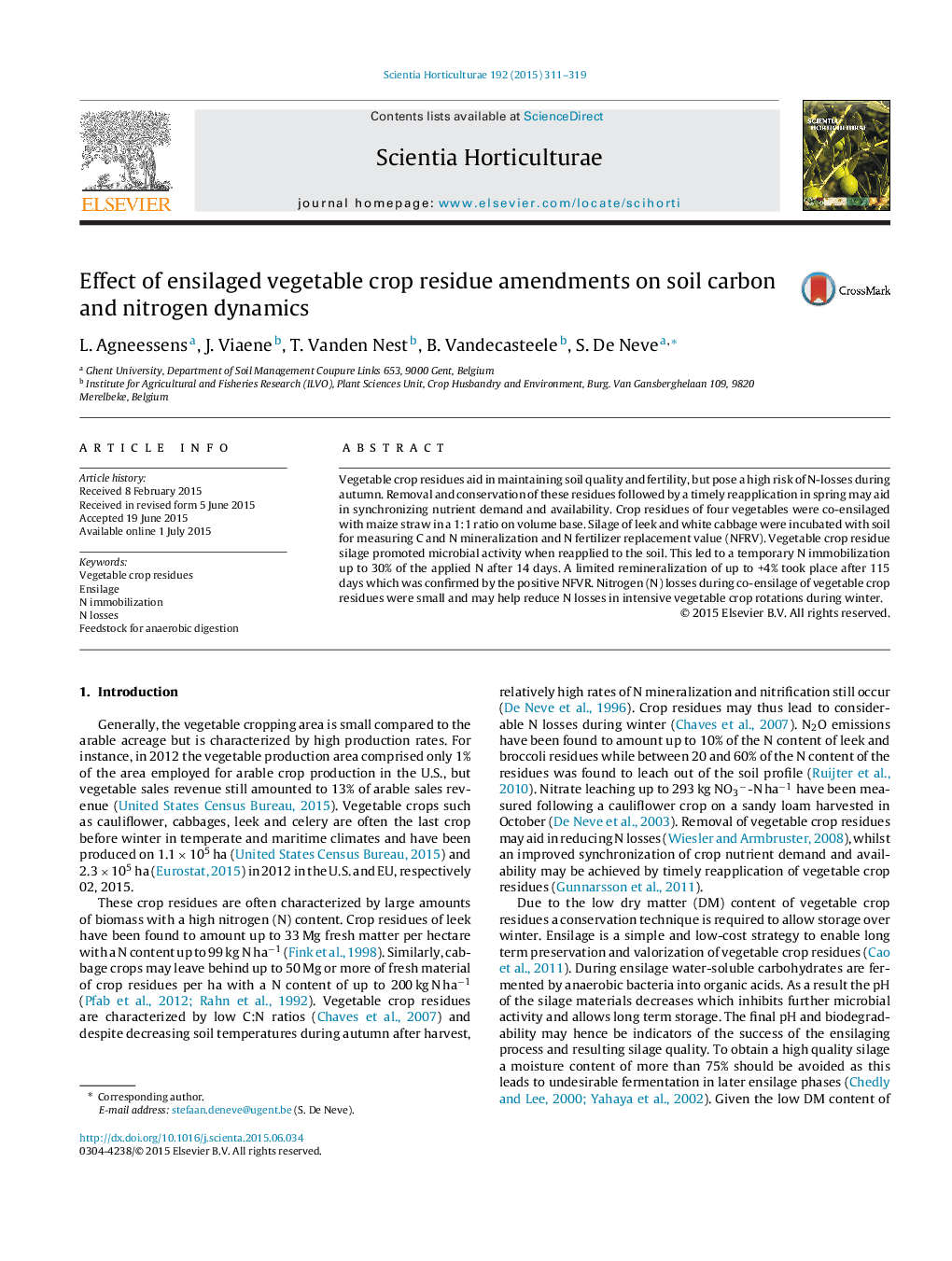| Article ID | Journal | Published Year | Pages | File Type |
|---|---|---|---|---|
| 4566264 | Scientia Horticulturae | 2015 | 9 Pages |
•Ensilage of vegetable residues may reduce N losses in intensive vegetable rotations.•Reapplication in spring may aid in synchronizing nutrient demand and availability.•Ensilaged vegetable residues stimulated soil microbial activity after incorporation.•Optimal timing between crop planting and ensilage application should be evaluated.
Vegetable crop residues aid in maintaining soil quality and fertility, but pose a high risk of N-losses during autumn. Removal and conservation of these residues followed by a timely reapplication in spring may aid in synchronizing nutrient demand and availability. Crop residues of four vegetables were co-ensilaged with maize straw in a 1:1 ratio on volume base. Silage of leek and white cabbage were incubated with soil for measuring C and N mineralization and N fertilizer replacement value (NFRV). Vegetable crop residue silage promoted microbial activity when reapplied to the soil. This led to a temporary N immobilization up to 30% of the applied N after 14 days. A limited remineralization of up to +4% took place after 115 days which was confirmed by the positive NFVR. Nitrogen (N) losses during co-ensilage of vegetable crop residues were small and may help reduce N losses in intensive vegetable crop rotations during winter.
